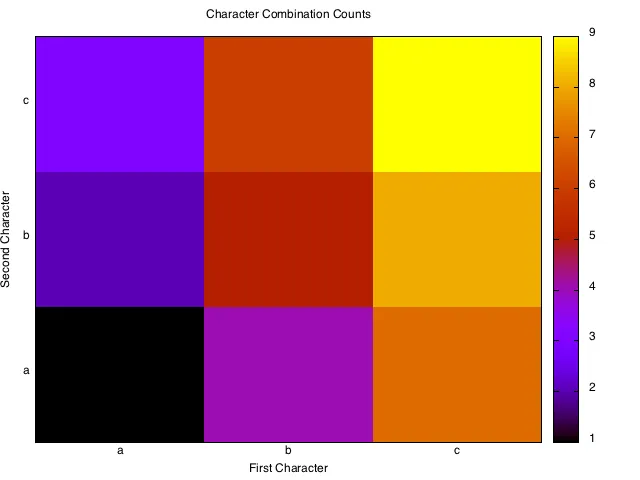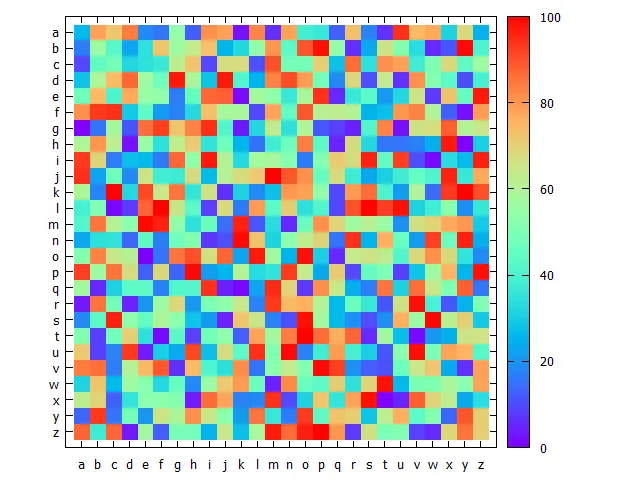我目前正在分析文本中的两个字符组合,并希望使用gnuplot将频率可视化为热图。我的输入文件格式如下(COUNT表示此组合的实际数量)
a a COUNT
a b COUNT
...
z y COUNT
z z COUNT
现在我想创建一个热力图(类似于此网站上显示的第一个热力图)。在x轴和y轴上,我希望显示从A到Z的字符。
a
b
...
z
a b ... z
我对gnuplot不太熟悉,所以我尝试使用plot "input.dat" using 2:1:3 with images,结果出现错误信息“无法使用空的x范围进行绘图”。我的天真想法是运行set xrange ['a':'z'],但没有帮助。
网站上有很多相关问题,但它们要么涉及数值x值(例如非均匀网格上的Gnuplot热图),要么涉及不同的输入数据格式(例如gnuplot:使用行和列名称标记矩阵(热图)的x和y轴)
所以我的问题是:将我的输入文件转换为漂亮的gnuplot热图的最简单方法是什么?

